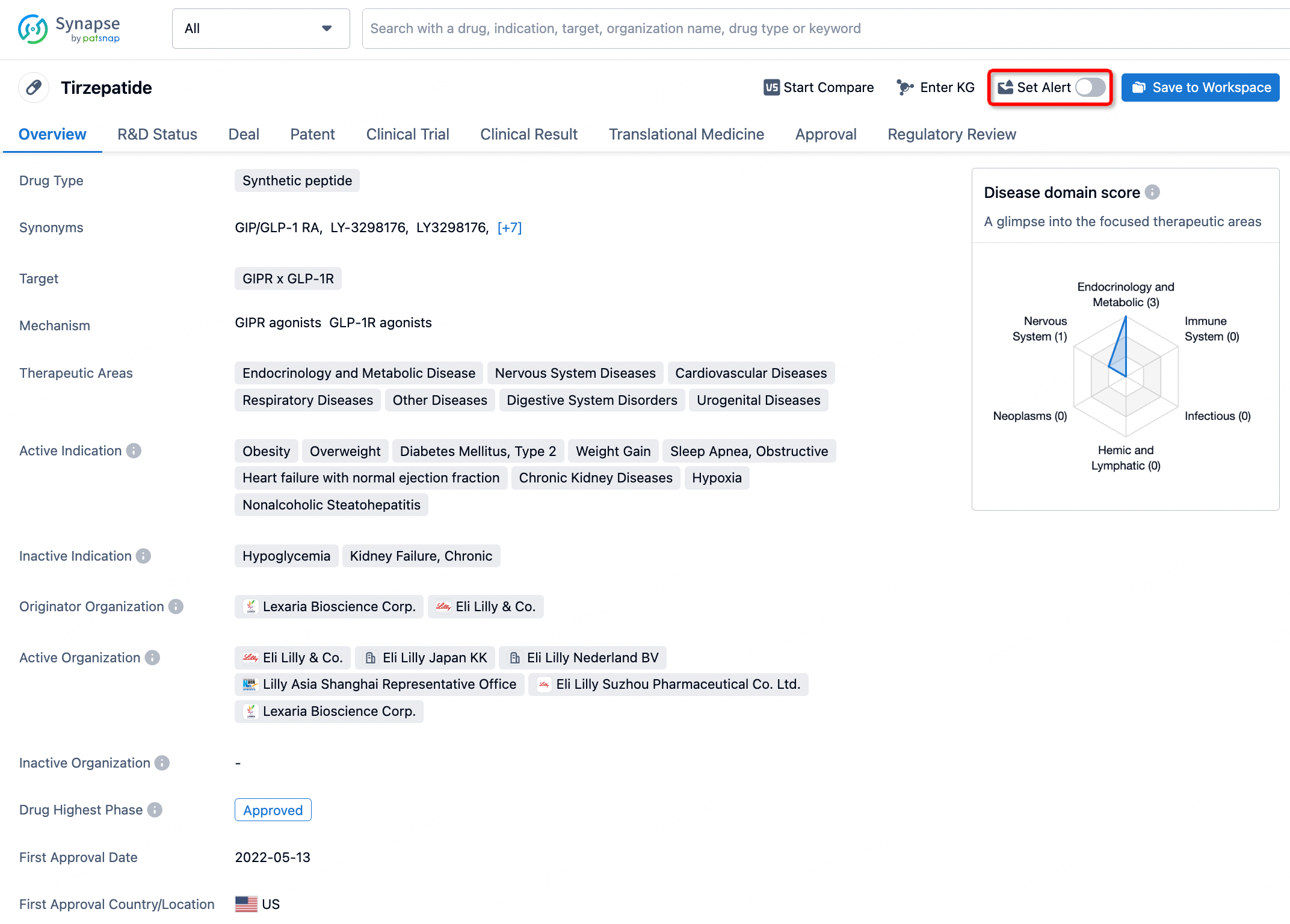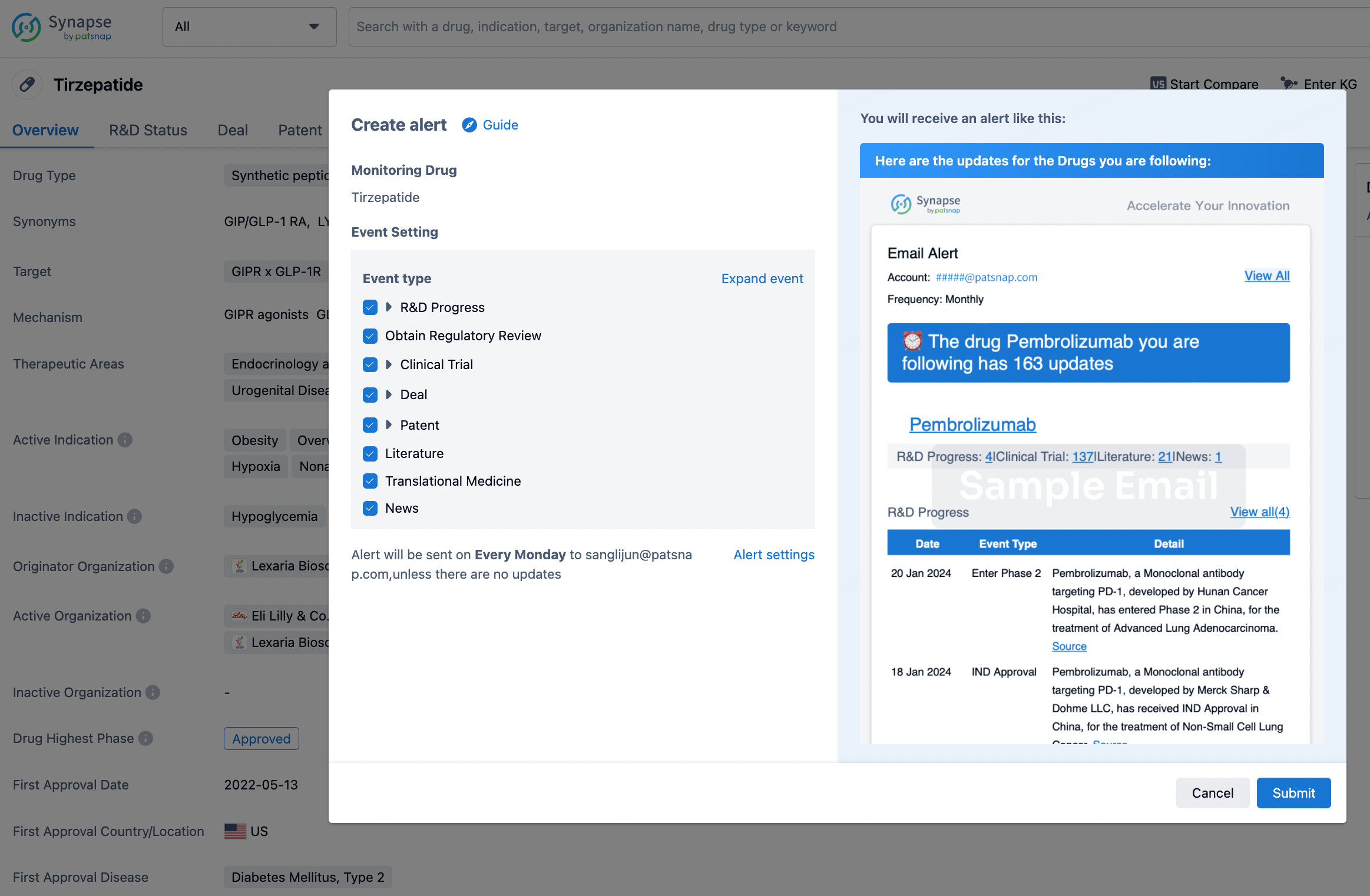Request Demo
What is the mechanism of Nifurzide?
18 July 2024
Nifurzide is an antimicrobial agent that comes under the class of nitrofuran derivatives. It is primarily used in the treatment of gastrointestinal infections caused by bacteria. To understand how Nifurzide works, it is essential to delve into its mechanism of action, pharmacokinetics, and the types of bacteria it targets.
Nifurzide’s mechanism of action involves inhibiting bacterial enzymes responsible for critical cellular processes. The drug's nitrofuran moiety undergoes reduction within the bacterial cell, leading to the formation of reactive intermediates. These intermediates can attack various components within the cell, including DNA, RNA, and proteins. Specifically, the reduction process generates reactive oxygen species (ROS) and other free radicals, which damage bacterial DNA by inducing breaks and cross-links. This results in the inhibition of bacterial cell replication and ultimately leads to cell death.
One of the key advantages of Nifurzide is its broad-spectrum activity. It is effective against a range of Gram-positive and Gram-negative bacteria. This includes common gastrointestinal pathogens like Escherichia coli, Salmonella spp., and Shigella spp. Because of its broad activity, Nifurzide is often employed in empiric therapy for acute diarrhea and other gastrointestinal infections where the exact bacterial cause is not immediately known.
Pharmacokinetically, Nifurzide is known for its minimal systemic absorption. When administered orally, the drug remains largely confined to the gastrointestinal tract, which is beneficial for localized treatment of gastrointestinal infections. This localized action also reduces the risk of systemic side effects. The drug is excreted primarily through feces, with very little being absorbed into the bloodstream. This pharmacokinetic profile makes Nifurzide particularly useful for treating infections confined to the gut without affecting other parts of the body.
Another important aspect of Nifurzide is its relatively low potential for developing bacterial resistance. The multifaceted nature of its action, involving various cellular targets, makes it difficult for bacteria to develop resistance mechanisms quickly. However, as with any antimicrobial treatment, the judicious use of Nifurzide is essential to minimize the risk of resistance development over time.
Nifurzide is generally well-tolerated by most patients. Adverse effects are rare but can include minor gastrointestinal disturbances such as nausea and abdominal pain. Given its favorable safety profile and effectiveness, it is often a preferred choice for treating gastrointestinal infections, especially in regions where such infections are prevalent.
In conclusion, Nifurzide is a potent antimicrobial agent that targets a broad spectrum of bacteria responsible for gastrointestinal infections. Its mechanism of action involves the generation of reactive intermediates that damage bacterial DNA and other cellular components, leading to bacterial cell death. With minimal systemic absorption and a low risk of resistance development, Nifurzide remains an effective and safe option for treating gastrointestinal infections.
Nifurzide’s mechanism of action involves inhibiting bacterial enzymes responsible for critical cellular processes. The drug's nitrofuran moiety undergoes reduction within the bacterial cell, leading to the formation of reactive intermediates. These intermediates can attack various components within the cell, including DNA, RNA, and proteins. Specifically, the reduction process generates reactive oxygen species (ROS) and other free radicals, which damage bacterial DNA by inducing breaks and cross-links. This results in the inhibition of bacterial cell replication and ultimately leads to cell death.
One of the key advantages of Nifurzide is its broad-spectrum activity. It is effective against a range of Gram-positive and Gram-negative bacteria. This includes common gastrointestinal pathogens like Escherichia coli, Salmonella spp., and Shigella spp. Because of its broad activity, Nifurzide is often employed in empiric therapy for acute diarrhea and other gastrointestinal infections where the exact bacterial cause is not immediately known.
Pharmacokinetically, Nifurzide is known for its minimal systemic absorption. When administered orally, the drug remains largely confined to the gastrointestinal tract, which is beneficial for localized treatment of gastrointestinal infections. This localized action also reduces the risk of systemic side effects. The drug is excreted primarily through feces, with very little being absorbed into the bloodstream. This pharmacokinetic profile makes Nifurzide particularly useful for treating infections confined to the gut without affecting other parts of the body.
Another important aspect of Nifurzide is its relatively low potential for developing bacterial resistance. The multifaceted nature of its action, involving various cellular targets, makes it difficult for bacteria to develop resistance mechanisms quickly. However, as with any antimicrobial treatment, the judicious use of Nifurzide is essential to minimize the risk of resistance development over time.
Nifurzide is generally well-tolerated by most patients. Adverse effects are rare but can include minor gastrointestinal disturbances such as nausea and abdominal pain. Given its favorable safety profile and effectiveness, it is often a preferred choice for treating gastrointestinal infections, especially in regions where such infections are prevalent.
In conclusion, Nifurzide is a potent antimicrobial agent that targets a broad spectrum of bacteria responsible for gastrointestinal infections. Its mechanism of action involves the generation of reactive intermediates that damage bacterial DNA and other cellular components, leading to bacterial cell death. With minimal systemic absorption and a low risk of resistance development, Nifurzide remains an effective and safe option for treating gastrointestinal infections.
How to obtain the latest development progress of all drugs?
In the Synapse database, you can stay updated on the latest research and development advances of all drugs. This service is accessible anytime and anywhere, with updates available daily or weekly. Use the "Set Alert" function to stay informed. Click on the image below to embark on a brand new journey of drug discovery!
AI Agents Built for Biopharma Breakthroughs
Accelerate discovery. Empower decisions. Transform outcomes.
Get started for free today!
Accelerate Strategic R&D decision making with Synapse, PatSnap’s AI-powered Connected Innovation Intelligence Platform Built for Life Sciences Professionals.
Start your data trial now!
Synapse data is also accessible to external entities via APIs or data packages. Empower better decisions with the latest in pharmaceutical intelligence.


